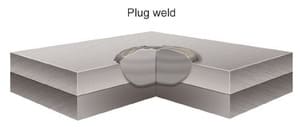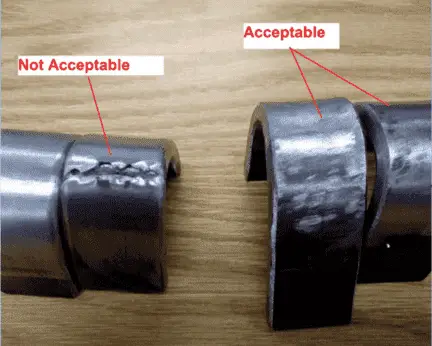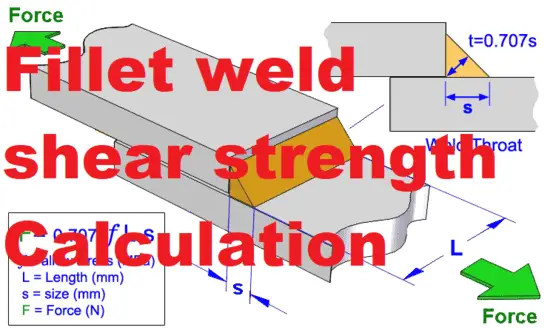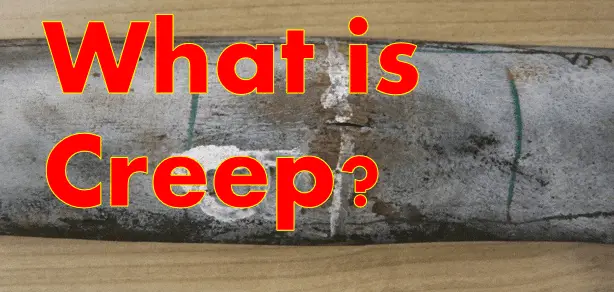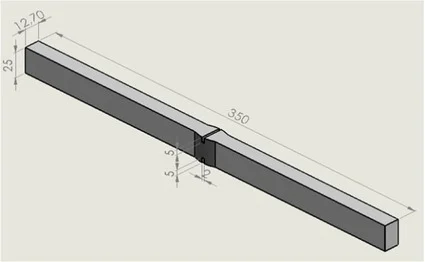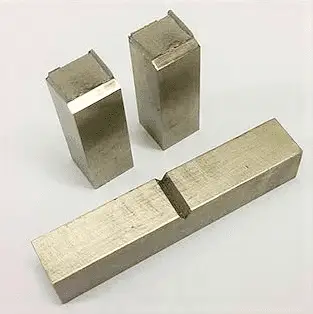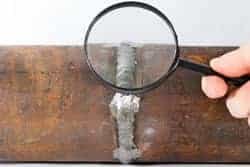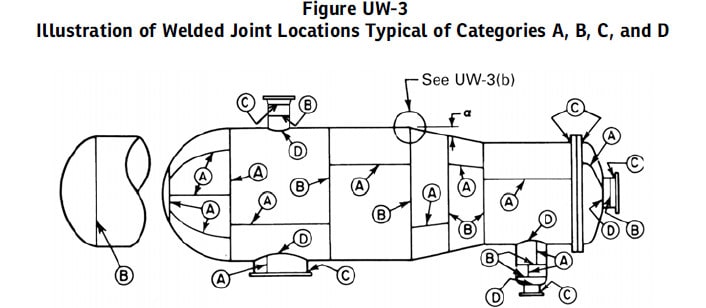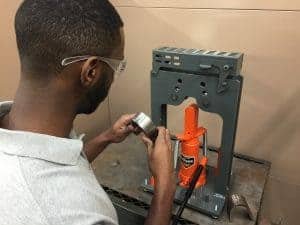Tensile Shear Test for Spot Welds
The Tensile shear test for spot welds is the most widely used method for determining the strength of resistance spot welds. The test is also widely used for Proejection welds and standardized by ISO 14272.
The test specimen used is as shown in Figure below. It is made by overlapping suitable-sized coupons (strips) and making a spot weld in the center of the overlapped area. A Tensile test machine is used to carry out the test.
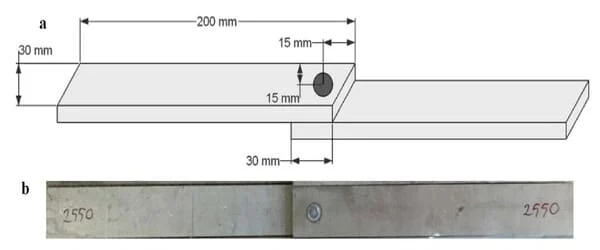
When the sheet thickness becomes large such as 4.8 mm and greater, the wedge grips of the test machine should be offset to reduce the eccentric loading which is accentuated by the thickness of the specimen.
Thus a more precise shear load will be imposed on the spot weld thereby minimizing the tension or peeling component.
The tension-shear test is commonly used in production assurance testing because it is an easy and inexpensive test to perform compared to tensile testing where sample preparation usually requires machining.
This test is used mainly to establish ultimate shear strength when the specimen is tested in tension. Sample prepared in standard size are loaded in tension to make it fail.
Cross Tension Shear Test
Cross Tension Shear Test is defined in the ISO 14272. This standard specify the requirements for shear test, test specimen dimensions and testing procedure for projection welds and spot welds.
When this shear test is used in combination with the cross-tension test, the cross-tension strength/ tension-shear strength ratio is referred to as a measure of ductility.
The test specimens used for the cross-tension test are shown in Figure below.
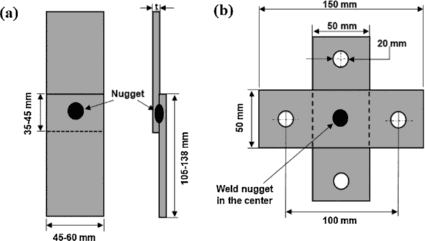
What is Shear Test?
A shear test or also called Stress Shear Testing is a type of tensile test where a specimen is loaded in tension until it fails. The specimen for a shear test may differ in size and shape from a tensile test specimen, but the loading is similar.
Shear Test Procedure
The test is performed by applying a force to a specimen in one direction, and then measuring the force required to cause the specimen to fail in shear. Shear tests are commonly used to test spot and projection welds, as well as other types of joints.
In a spot weld, for example, the shear test specimen is usually smaller and has a different shape than the tensile test specimen.
The purpose of a shear test is to determine the strength of a weld in shear, which is the force exerted when one object slides past another.
Shear tests can be performed on both metallic and non-metallic materials.
